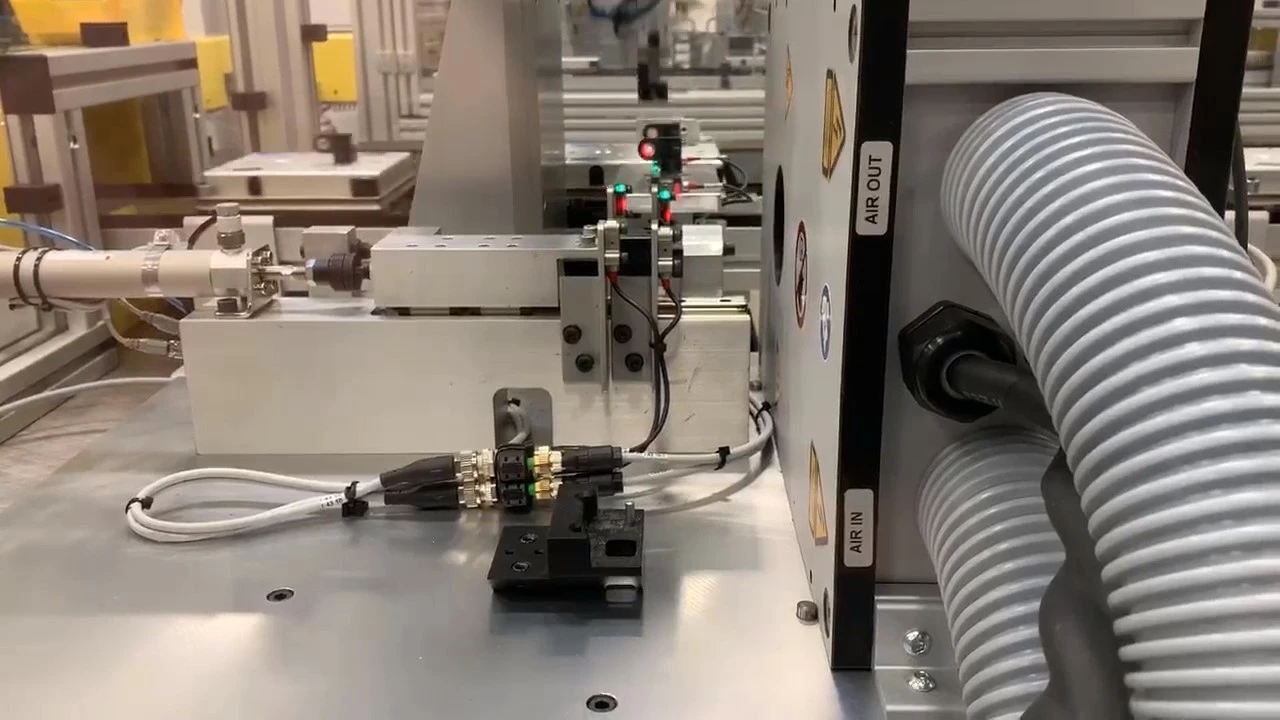Automotive Seat Sensor Assembly
Challenge: Overcome the risks of manual soldering of sensors which is inconsistent and leads to too much scrap material. Reduce manual labor to improve consistency in output, efficiency, and cost-savings. Automate serialization of parts.
Solution: A hybrid manufacturing system with 12 stations; 2 of them with manual operators. Main function is to assemble a sensor from raw parts- including programming, assembly, soldering, serialization, and 100% testing/failure analysis on each station. Machine maintains an extremely tight tolerance to ensure consistency, logs data, and locks the fixture so operators can't pull the parts out unless they are complete.
- Station 1: Pick new housing and place to machine pallet/ pick assembled part from pallet and place to completed tray or reject area
- Station 2: Insert demagnetized magnet into sensor housing. Measure insertion depth to +/- .2mm
- Station 3: Insert Hall IC into sensor housing. Measure insertion depth to +/- .15mm. The Hall IC detects the magnetic field around the sensor
- Station 4: Operator inserts control board into sensor housing
- Station 5: Solder power connection of sensor housing to control board
- Station 6: Solder Hall IC leads to control board
- Station 7: Inspect the quality of solder on each joint to ensure the joints are soldered to IPC class 2 standards
- Station 8: Operator loads over molded sensor housing
- Station 9: Magnetize sensor housing
- Station 10: Program control board
- Station 11: Test sensor housing for proper functionality
- Station 12: Laser mark part
This machine increases the efficiency and consistency of output from 1 part every 30 seconds to 1 part every 8 seconds. Overall ~27% increase in efficiency.


